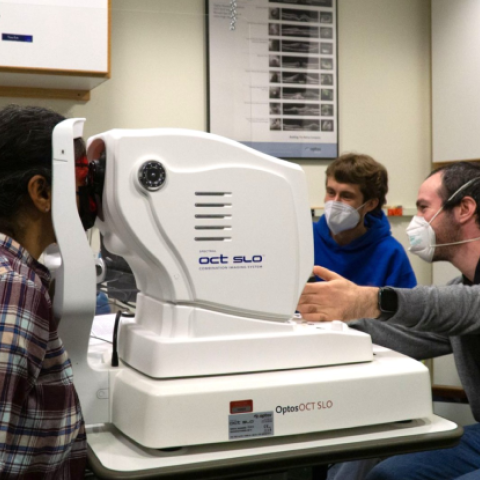Several factors impact the temporal and spatial properties of reaching movements. In this aim, we seek to decouple non-visual factors that may occur due to age and adaptive strategies, and quantify the specific role of the field loss on reaching. Normally sighted subjects and scotoma subjects will participate in a series of reaching experiments in which the visual feedback and reaching speed are manipulated. Comprehensive vision testing will be conducted on scotoma subjects, including perimetry with eye tracking to map out the extent of monocular and binocular central field loss relative to the monocular and binocular PRL. Monocular fields and PRLs will be confirmed with the more precise macular perimetry using a scanning laser ophthalmoscope (SLO) and optical coherence tomography (OCT) will be used to localize the foveal pit. Localizing the fovea relative to PRL and scotomas is a key step in equating target eccentricities between normal and scotoma subjects. All experiments in this aim are conducted without eye movements, in order to factor out oculomotor effects on reaching performance.
Get Involved
If you are interested in vision science or want to learn more about low vision and blindness, there are many opportunities to get involved at The Smith-Kettlewell Eye Research Institute.

